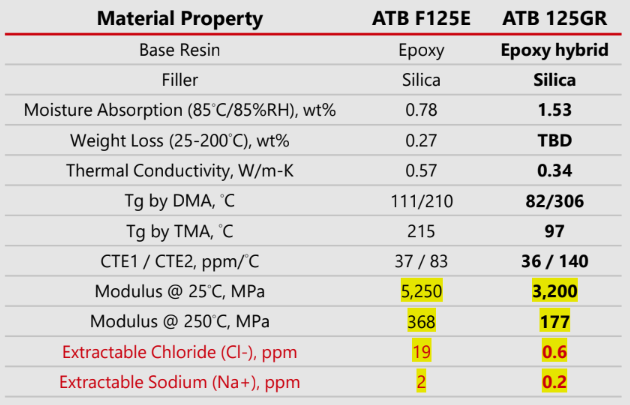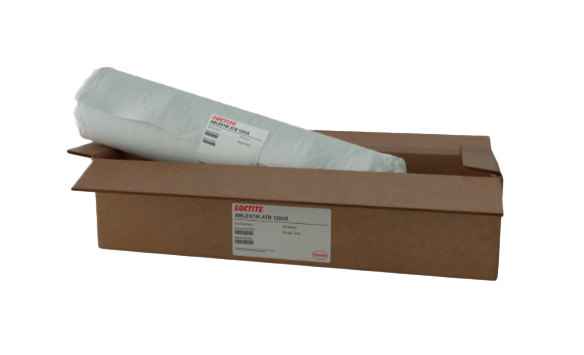LOCTITE ABLESTIK ATB 125GR
Harmonization Code : 3920.99.28.90 | Other plates, sheets, film, foil and strip, of plastics, non-cellular and not reinforced, laminated, supported or similarly combined with other materials ; Of other plastics ; Other; Other
Main features
- Low ionic content
- Excellent adhesion on both metal lead frames and BGAs
- High modulus
Product Description
LOCTITE ABLESTIK ATB 125GR adhesive film is formulated for use in wafer lamination processess or as a preform decal. ABLESTIK ATB 125GR is a new non-conductive die attach adhesive film suitable for use on small to medium size die sizes, with improved reliability on 0.5×.5 to 3×3 mm die size running in volume production.
LOCTITE ABLESTIK ATB 125GR has an integratedd icing tape designed for consistent die pick up.
Product Key Features
- Excellent workability
- Excellent adhesion on both metal lead frames and BGAs
- Meets thin wafer requirements
- Recommended for small to medium die size packages
- Consistent dicing and die pickup for small to medium die applications
Applications
- Semiconductor film or non-conductive die attach film for IC, discrete, and chip stack packages
Technical Specifications
| General Properties | |
| Adhesive Thickness Adhesive Thickness Adhesive thickness indicates the thickness of an adhesive layer. It refers to the adhesive thickness of a single side so for double sided tapes it always needs to be multiplied. | 25 µm |
| Work life @25°C Work life @25°C Work life is the amount of time we have to work with a material until it is no longer able to be easily worked and applied on a substrate. It is based on the change in viscosity and it can rely on the application requirements. | 60 hours |
| Thermal Properties | |
| Glass Transition Temperature (Tg) Glass Transition Temperature (Tg) The glass transition temperature for organic adhesives is a temperature region where the polymers change from glassy and brittle to soft and rubbery. Increasing the temperature further continues the softening process as the viscosity drops too. Temperatures between the glass transition temperature and below the decomposition point of the adhesive are the best region for bonding. The glass-transition temperature Tg of a material characterizes the range of temperatures over which this glass transition occurs. | 82-306 °C |
| Chemical Properties | |
| Moisture absorption | 1.53 % |
Additional Information

Properties of ATB 125GR versus ATB F125E
Recommended Cure Schedule
- 1 hour @175℃
Directions for Use
- Ensure all surfaces to be bonded are free from surface contamination.
- Adhesive must be completely used within the product's recommended work life.
- Remove the tape reel from the moisture-resistant package and load into the tape application machine.
- Store unused adhesive film in the original sealed moisture-resistant package until needed.



